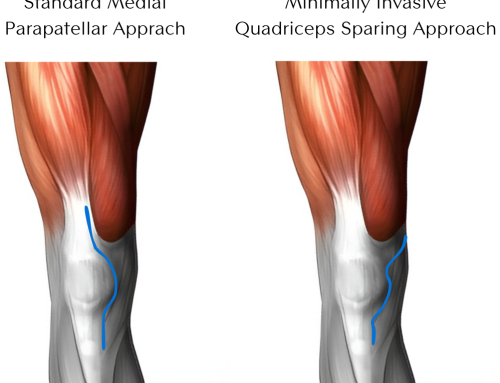
An adductor canal nerve block is very effective at reducing pain in total knee replacement surgery. It is a component of Dr Morton’s rapid recovery knee replacement protocol. The adductor canal nerve block is a type of regional anesthesia that is used during such operations, and it is administered by an anesthesiologist. The adductor canal has a pathway that runs through the adductor muscles to the femur bone, and the adductor canal can be blocked with injections of numbing medications to ensure low levels of pain during knee replacement surgery. An anesthesiologist will administer this drug. Sometimes, the catheter is inserted for up to 3-4 days, patients can receive a lengthy nerve block.
Table of Contents
What is a nerve block?
A nerve block is when a numbing medication is injected into a certain area of the body. When the adductor canal nerve block is used, it’s injected into an adductor canal to try and numb the pain during knee replacement surgery.
What is an adductor canal block?
The adductor canal is a pathway that runs through the adductor muscles to the femur bone and can be blocked with injections of numbing medications to ensure low levels of pain during knee replacement surgery.
The adductors are a group of muscles on either side of the thigh which include: Pectineus, Adductor Brevis, Gracilis (Lateral Head), Gracilis (Medial Head), Sartorius (Lateral Head), and Sartorius (Medial head).
The femoral canal contains the femoral artery, vein ( posterior to the artery), and nerve to the vastus medialis as well as the saphenous nerve – which is the longest cutaneous branch of the femoral nerve.
Numbing medication is injected into this passage before surgery so that there will be little or no pain in the adductors when the knee is cut.
What is an adductor canal catheter?
A continuous infusion of local anesthesia may be administered to help with pain management for up to 3-4 days if you are a candidate for an adductor canal catheter. A tiny, flexible catheter is inserted into the adductor canal and a tiny, round pump containing local anesthetic medication, known as a pain pump, is used to administer the numbing medicine around the nerve.
Does an adductor canal nerve block hurt?
A nerve block is a minimally invasive procedure that uses a tiny needle under ultrasound guidance to ensure that the medicine goes only to the targeted nerve and precisely around it. Before inserting the nerve block needle, your anesthesiologist will make sure you are comfortable with your nerve block, giving you sedation and numbing your skin. If necessary, your anesthesiologist may choose to do the operation while you are asleep.
Risks of an adductor canal block
The adductor canal block can be a very successful and reliable way to combat pain during knee replacement surgery. However, there are still possible risks associated with this type of nerve block. These include:
- infection
- bleeding in the area surrounding the adductors
- nerve damage or injury to nearby nerves down to your foot or up to your groin
- an allergic reaction to the adductor canal block medication
- bruising or pain around the adductors where the adductor nerve block was injected
- If the medicine to numb the nerve is injected into an artery or vein, it can cause abnormal heart rhythms or seizures.
Typically, adductor canal blocks are successful in reducing adductor muscle pain during knee replacement surgery; they do not cause significant side effects for patients. Most adductor canal procedures do not result in any notable long-term complications or issues that might impact future surgeries or other medical procedures.
Please contact your anesthesiologist for any queries regarding the use of a nerve block catheter, as listed in your discharge instructions, or if you currently have one and need clarification.
If you have any serious side effects such as ringing in your ears, a metallic taste in your mouth, numbness around your lips, trouble seeing, confusion, or seizures, clamp the pump catheter as directed and seek immediate medical attention.




